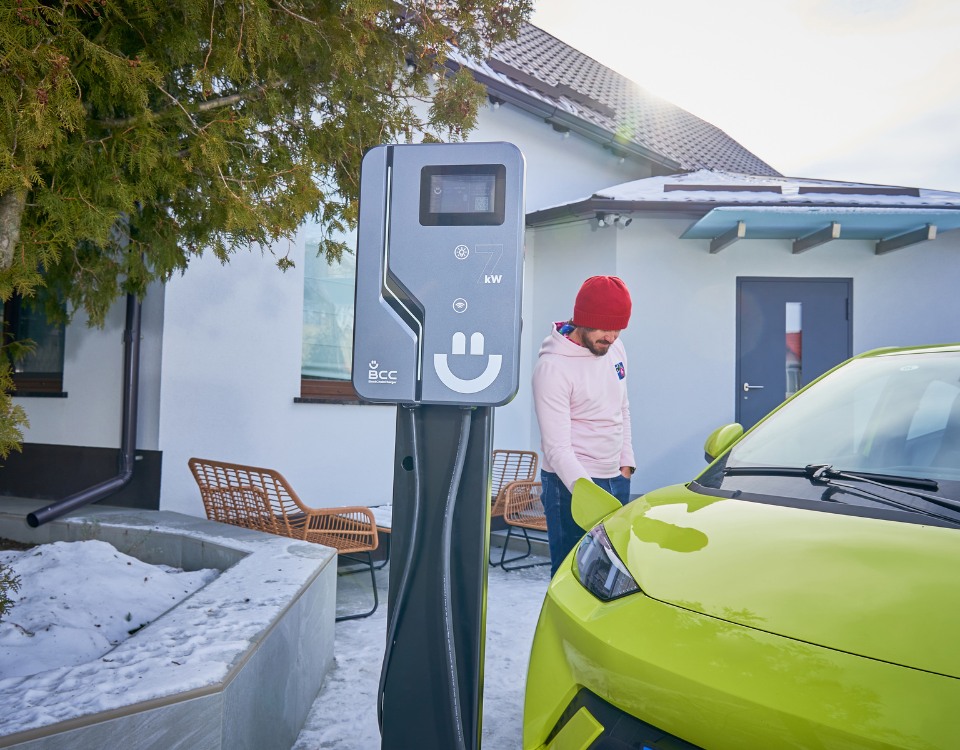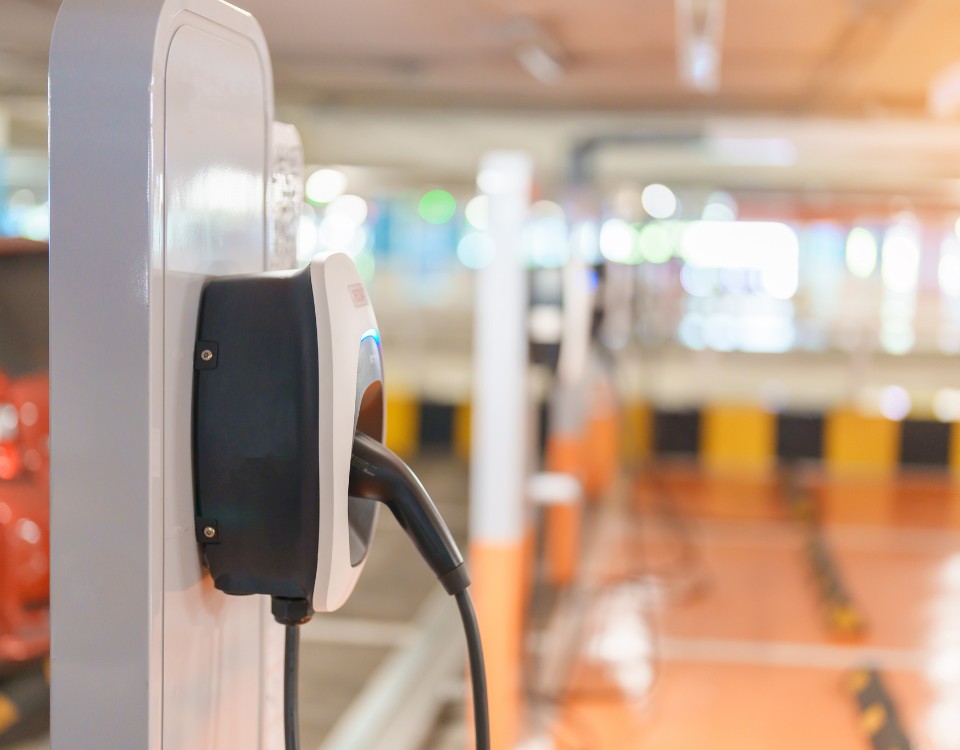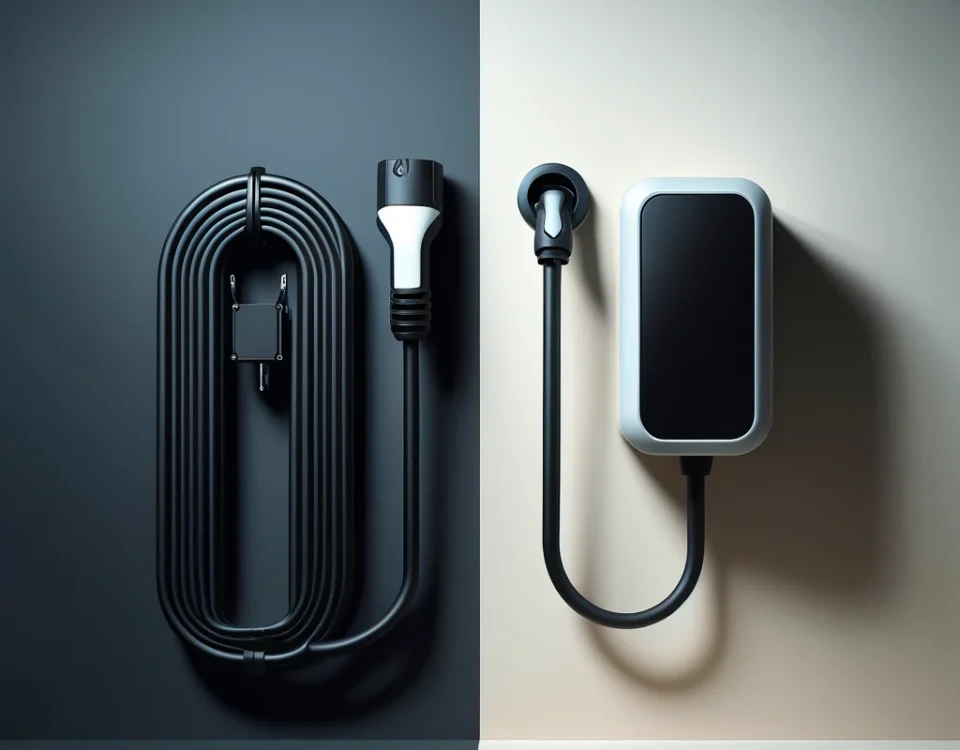
As the adoption of electric vehicles (EVs) accelerates globally, the infrastructure for charging these vehicles becomes increasingly crucial. For many prospective and current EV owners, understanding the different options available for charging their vehicles is key to maximizing convenience and efficiency.
This article aims to provide a detailed comparison of home and public charging options, highlighting the pros and cons of each to help drivers make informed decisions about which setup best suits their lifestyle and needs.
Table of Contents
Overview of EV Charging Options
Electric vehicles require charging infrastructure that differs significantly from the traditional fueling stations used by gasoline-powered cars. EV charging can be broadly categorized into two types: home charging and public charging.
Home charging involves using a charging station installed at a private residence, where the most common types are Level 1 and Level 2 chargers. Level 1 chargers use a standard 120-volt outlet or a 240-volt using just 16A, making them convenient but slow, typically offering about 6 – 8 km of range per hour of charging. Level 2 chargers, on the other hand, operate on a 240-volt or a 380-volt supply and can provide roughly 18 – 120 km of range per hour, depending on the vehicle and the specific charger.
Public charging stations are available in various public places such as shopping centers, office buildings, and dedicated charging parks. These include Level 2 chargers and DC Fast Chargers, the latter being the quickest option available, capable of charging an EV to 80% in as little as 20 minutes under optimal conditions.
Understanding these options and their implications for daily use is vital for any EV owner or potential buyer, as each has its unique set of benefits and challenges.
Home Charging

Pros:
- Convenience: The primary advantage of home charging is the convenience it offers. EV owners can charge their cars overnight, ensuring a full battery each morning without needing to detour to charging stations.
- Cost-effective: Charging at home is generally cheaper on a per-charge basis due to lower residential electricity rates. Additionally, many utility companies offer reduced rates for off-peak hours, further decreasing costs.
- Integration with renewable energy: Homeowners can integrate their charging setup with renewable energy sources like solar panels, reducing environmental impact and energy costs.
- Customized installation: Owners can choose their charger type and installation site, tailoring the setup to their specific needs and preferences.
Cons:
- Upfront investment: Installing a home charging station requires an initial investment for both the purchase of the charger and its installation. The cost can vary significantly based on the type of charger and electrical upgrades needed.
- Space requirements: Home charging requires a dedicated space, such as a garage or driveway, which may not be available to all potential EV owners, especially those in urban apartments.
- Slower charging with Level 1: Those limited to Level 1 charging will find it much slower, which might not be sufficient for drivers with high daily mileage.
- Maintenance responsibilities: Homeowners are responsible for the maintenance and operation of their charging equipment, which could include additional costs over time.
Public Charging

Pros:
- Accessibility: Public charging stations are increasingly ubiquitous, found at convenient locations like shopping centers, office parks, and along highways. This accessibility makes it easier for EV owners to charge their vehicles when they are away from home or on long trips.
- Speed: Public stations often feature DC Fast Chargers, which can significantly reduce charging time—providing up to 80% charge in 20 to 30 minutes. This is particularly beneficial for long-distance travel where time is of the essence.
- No Maintenance: Users of public charging do not need to worry about maintenance or uptime, as these responsibilities fall to the service providers.
Cons:
- Higher Cost: Public charging can be more expensive than home charging, primarily because commercial rates for electricity and the overhead costs of maintaining the charging stations are higher.
- Availability Issues: Despite their growth, public charging stations can sometimes be fully occupied, leading to waiting times. Additionally, malfunctioning equipment can further reduce availability.
- Compatibility Concerns: Not all EVs are compatible with every type of public charger, particularly concerning connector types and charging speeds, which can be a significant inconvenience.
- Security: Charging in public spaces can raise concerns about the security of both the vehicle and the driver, especially when charging at night or in less-frequented locations.
Cost Analysis of Home Charging vs. Public Charging
The cost of charging an EV can vary widely depending on whether the owner uses home or public charging facilities. Here’s a closer examination:
- Home Charging Costs: The initial setup for home charging can range from a few hundred to several thousand dollars, depending on the charger type (Level 1 vs. Level 2) and necessary electrical upgrades. However, the cost per kWh (kilowatt-hour) at home is generally lower, often aligning with residential electricity rates which could be around $0.13 per kWh. Considering these factors, the average cost to fully charge an EV at home might range from $3 to $10.
- Public Charging Costs: Public chargers, especially DC Fast Chargers, tend to charge a premium, with prices varying from $0.30 to $0.60 per kWh or even per-minute pricing, which can significantly increase the cost. A full charge in a public setting could cost between $10 to $30 or more, depending on the vehicle’s battery capacity and the charging rate.
For many, the balance of these costs will depend largely on their typical driving patterns and the availability of public charging stations along their usual routes.
Environmental Impact of Home Charging vs. Public Charging
Choosing between home and public charging stations also has different implications for the environment, which hinge largely on the source of the electricity:
- Home Charging and Renewable Energy: For homeowners using renewable sources like solar or wind to power their homes (including their charging stations), the environmental impact is reduced. This setup not only diminishes the reliance on the grid but also ensures that the vehicle is charged using clean energy.
- Public Charging Stations’ Energy Sources: The environmental footprint of public charging stations can vary greatly. While some providers exclusively use renewable energy, others may rely on non-renewable sources. The overall impact thus depends on the energy mix of the grid supplying these stations, which can vary by region.
- Efficiency at Scale: Public charging stations potentially benefit from higher efficiencies and economies of scale in managing energy usage, especially in managing demand and integrating renewable energy sources efficiently.
User Experiences: Home Charging vs. Public Charging
The practical experiences of EV owners can vary significantly depending on their charging habits. Here are some insights gathered from various case studies and owner testimonials:
- Home Charging Satisfaction: Many EV owners appreciate the simplicity and reliability of home charging. Being able to charge overnight and start each day with a full battery is highly valued. However, some note the initial setup cost and space requirements as barriers. Others have shared positive outcomes from integrating home charging with smart home systems to optimize electricity usage and costs.
- Public Charging Feedback: Users often praise the convenience of fast charging stations during long trips, highlighting how they can quickly recharge and continue their journey. However, frustrations arise over the availability of charging stations and the variability in their functionality. Stories of stations being out of service or already occupied are common, which can add stress and planning difficulties to trips. At GoCharge, we are working to make these scenarios story material.
- Balancing Both Options: A significant number of EV owners utilize both home and public charging. They find that while home charging covers daily needs efficiently, public charging is indispensable for longer journeys. The dual approach allows users to enjoy the benefits of each method while compensating for their respective drawbacks.
Conclusion
Choosing between home charging vs. public charging options for an electric vehicle involves weighing several factors, including convenience, cost, availability, and environmental impact. Home charging offers unparalleled convenience and lower costs for regular use but requires an initial investment and space. On the other hand, public charging provides critical support for longer journeys and high-speed charging, albeit at a higher cost and with less predictability.
Ultimately, the best choice depends on individual circumstances such as driving habits, living arrangements, and geographical location. EV owners might find that a combination of both charging methods suits their needs best, allowing for daily convenience and travel flexibility.
| Aspect | Home Charging | Public Charging |
| Convenience | High – Charge overnight at home. | Moderate – Available at various locations but may require waiting. |
| Installation Cost | Higher initial cost for purchasing and installing equipment. | None – Costs are handled by service providers. |
| Charging Cost | Lower – Uses residential electricity rates. | Higher – Rates vary, generally more expensive than home charging. |
| Charging Speed | Varies – Level 1 slow; Level 2 much faster. | Fast – Includes access to DC Fast Chargers. |
| Maintenance | The owner is responsible for maintenance and operation. | Maintained by service providers. |
| Space Requirements | Requires dedicated space (garage, driveway). | Not applicable – Uses public or commercial space. |
| Energy Source | Can integrate with home renewable energy systems. | Depends on the energy mix of the grid (variable renewable content). |
| Availability | Always available at home. | Subject to availability and operational status of public stations. |
| Environmental Impact | Potentially lower if using green energy at home. | Varies widely based on the energy source of the grid. |
| User Satisfaction | High – Convenience of not having to go out to charge. | Mixed – Appreciated for speed, criticized for availability issues. |


